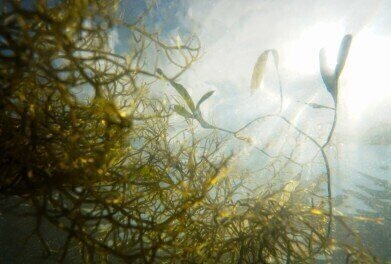Water/Wastewater
Ohio Fight Against Lake Erie Algae in Toxic Clean-Up
Feb 09 2015
Citizens of Ohio have taken the first step towards liberating Lake Erie of its toxins and algae blooms. While official moves are being made by Ohio politicians the actions have been heavily influenced by the public who are campaigning for safer drinking water. The push comes in the wake of a recent toxin scare which resulted in the contamination of drinking water dispersed to over 400,000 people.
New laws for farmers
The new legislations will see farmers banned from laying manure over the top of frozen of waterlogged fields, a technique that is thought to foster the spread of algae bloom in Lake Erie. The laws will also lay out new rules which prevent dredged sediment from being dumped into the lake.
Both of these actions supposedly play an integral role in creating environments in which algae blooms can thrive. The rapid accumulation of algae then creates toxins which are harmful to both the environment and Ohio’s population.
Public pressure to take action
As Lake Erie’s algae blooms problem continues to escalate state and federal officials have begun to respond to public pressure. An even greater sense of urgency was triggered when water borne toxins left Toledo and South Eastern Michigan residents without clean drinking water for two consecutive days last August.
Mike Sheehy, a Democratic politician from Oregon’s suburb of Toledo maintains that “we need to start doing something” before the situation turns into a fully-fledged health and environmental crisis. He supports the idea that agricultural run-off and dredging are responsible and need to be stopped ASAP. “It’s not something that all of a sudden somebody just thought up,” he explains. “There’s some pretty good science that suggest those are major contributors.”
We looked into this topic and some of the solutions in detail in this article: The best way to clean up flooded lakes and reservoirs?
Contrasting opinions
While the proposed changes are designed to solve the problem some experts remain sceptical. Phosphorus is proven to feed algae blooms however there is very little research on how much of the chemical element is produced by dredging and manure run offs.
According to the US Department of Agriculture’s Natural Resource Conservation Service less than 20% of Lake Erie’s phosphorus content is created by livestock manure. The remaining 80% is produced by harsh commercial fertilisers. This has led to calls for further investigation into the use of commercial fertilisers as well as the roll out of agricultural educational programmes.
Specialists are maintaining that spreading manure on frozen ground is a rarely used practice which means that the new laws would have little impact on improving water quality and tackling Lake Erie’s algae bloom problem.
What do the farmers say?
Farmer’s unions originally challenged the new laws, claiming that they will incur costs for farmers who lack adequate manure storage space. However they’ve recently changed their tune, with Yvonne Lesicko, policy director at the farm saying “we want to be good stewards of the land.”
So will the new laws be able to fight Lake Erie’s algae blooms dilemma? Opinions are divided but at the end of the day it’s a long-term project that is sure to be tweaked, refined and mastered along the way.
Events
May 05 2024 Seville, Spain
May 13 2024 Munich, Germany
May 23 2024 Beijing, China
May 23 2024 Beijing, China
Jun 10 2024 Algiers, Algeria













